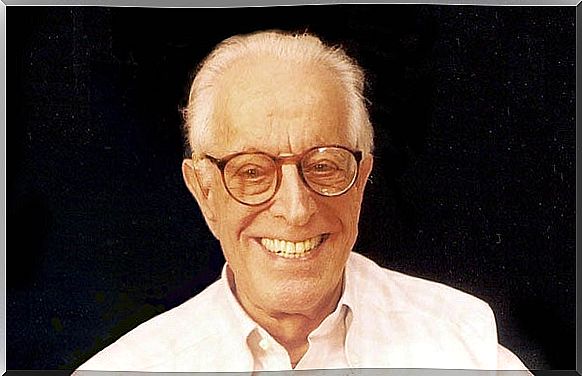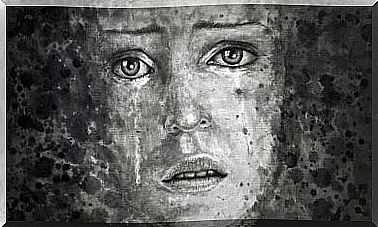Albert Ellis’s TREC

TREC is the acronym for Rational Emotional Behavioral Therapy, which was developed by Albert Ellis following the principles of cognitive psychology. After the inefficiency of behavior therapy (based on stimulus-response) to treat some psychological disorders, with a marked cognitive cut, they began to work to give it a spin and improve the results. Thus, TREC is an example of those pioneering techniques that showed great efficacy in disorders such as anxiety and depression.
This therapy is based on the ABC model of cognitive psychology initially proposed by Albert Ellis. In this model it is proposed that activating events (A) by themselves do not cause emotional, behavioral or cognitive consequences (C); These will depend on how the event is perceived or interpreted (B). In short, A (events) provoke B (interpretations) and these provoke C (consequences / behaviors).

Psychological foundations of the TREC
The ultimate goal of the TREC is to eliminate or modify C. On the other hand, C could be altered by modifying both the events (A) and their interpretations (B). On the other hand, it is obvious that, on many occasions, events are unalterable. So, in this type of therapy, the work with the patient focuses on trying to change some of the interpretations that they make and that lead them to carry out the behaviors that we intend to change.
Genesis of disorders
Albert Ellis, after many investigations, found that all or most of us develop irrational thoughts that make us see reality in an extremely negative way. He came to find more than 200 types of thoughts that promoted this negative vision, which led to anxiety disorders or depression. At present we can group these forms of irrational thought into 4 types:
- Demands or demands : eg “If my partner loved me, he should have given me a gift.”
- Catastrophism : eg “As tomorrow the interview goes wrong, it will be the end of my professional career, I will die.”
- Low tolerance for frustration : eg “I’m scared to go to that party because I’m sure everyone is going to reject me, it’s very hard and I can’t bear it.”
- Depreciation : eg “My food has burned, I am useless, I do everything wrong”.
These types of thoughts are considered irrational because they are false, illogical, extreme, or too demanding inferences. Ellis argues that they come from the absolutist beliefs of “should” or “would” that abound in our internal dialogue.
Maintenance of disorders
The aforementioned thought modes cause negative emotional, behavioral, or negative consequences, but what maintains them? According to the TREC, there are three types of insight or ideas that help disorders or discomfort last over time:
- Insight # 1 : Disturbance is determined by irrational interpretations derived from negative events. However, if the person believes that the emotional disturbance is due to the event rather than its interpretation, he will try to change the situation without success: the real problem is his irrational beliefs.
- Insight # 2 : If people continue to assert themselves in their rigid and extreme beliefs, they will resist change, so the disorder will remain.
- Insight # 3 : A thought focused on the past will cause a stagnation in events and irrational beliefs. Only by working in the present and in the future will it be possible to change beliefs and with them discomfort.

Characteristics of the TREC
To talk about what a rational emotional behavioral therapy should be like, we will talk from two perspectives. The first one is going to be the therapeutic style, which will talk about what its strategies or methods are; and the second, the relationship he takes with the client, the way the therapist interacts with him.
The therapist’s attitude will have the following characteristics:
- Active and directive : it is important that the therapist adopt an active attitude and offer alternatives to the irrational beliefs of the patient.
- Verbally active : it is essential that the dialogue is fluid and active by both parties, since the operation of the therapy is based on discussion and debate.
- Didactic : the therapist must behave like a good teacher teaching his apprentice to generate a change in him.
- Promote changes in the philosophy of life : an essential aspect is to provoke a change in the patient’s way of thinking, in his philosophy of life.
- Do not encourage catharsis : Although it may alleviate discomfort at first, the intentional expression of the emotions derived from your beliefs can strengthen these same beliefs.
- Be flexible : each patient is a different world, with their own and characteristic way of thinking. If the therapist is not flexible and knows how to adapt, he will not be able to generate changes in his patients.
On the other hand, the relationship with the patient will be based on the following principles:
- Unconditional acceptance : there should be no value judgment, neither positive nor negative towards the client / patient. This must show that they are clients, they are accepted like any other person as human beings, fallible, neither useless nor valuable, since one or more behaviors do not define anyone.
- Empathy : understanding in depth the patient’s thinking is essential to understand the nature of their beliefs. The therapist must understand the subject’s philosophy of life in order to help him change
- Be genuine : the therapist must be open and accessible. You can even talk about your private life when it seems appropriate, to exemplify that we all go through difficulties and that we all make mistakes. Personal experience does not serve so much to offer solutions as to normalize certain emotions.
- Having a sense of humor : it is one of the key aspects of TREC, since it is a therapy based on restlessness and tranquility. The therapist can use humor to highlight aspects of their irrational beliefs. Of course, without depreciating or disrespecting: the therapist in this sense has to take into account that the sensitivity of each patient is different.
- Informal Therapeutic Style : TREC works best in a relaxed setting and away from formal aspects of therapy. The patient should see therapy as a friendly and fun talk, in which they can talk about their concerns and beliefs in a relaxed way.

ECRT is an interesting and largely successful therapy for patients. It helps to change their philosophy of life, to assume a more protective style against problems that cause anxiety or depression. And also, it has great scientific evidence to back it up. This therapy places Albert Ellis as one of the most important figures in clinical psychology.








